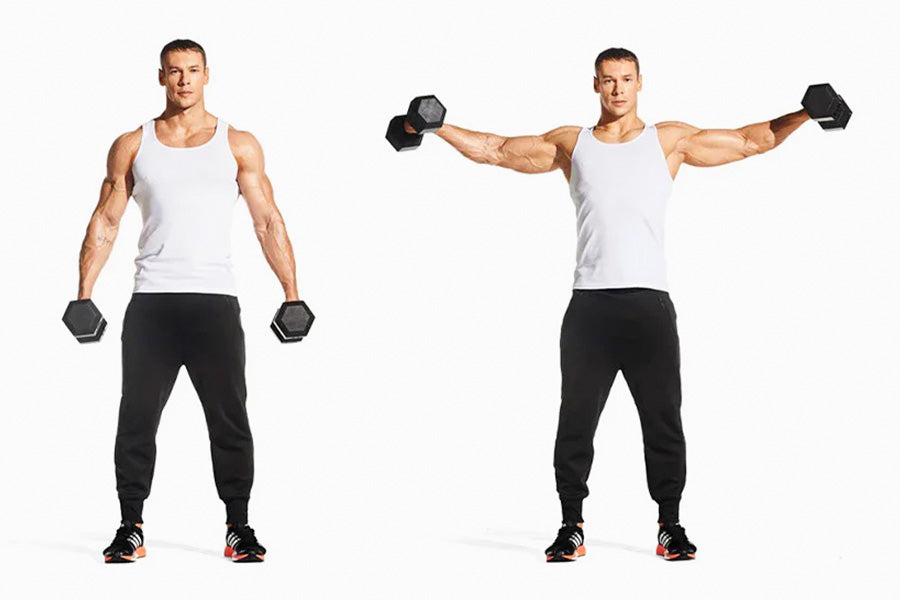Lateral Raise Overview
|
Exercise Description |
|
|
Main Target Muscles |
Shoulders |
|
Secondary Target Muscles |
Upper Back |
|
Workout Type |
Strength Training |
|
Gym Gear |
Dumbbells, Barbells, Cable Machine, Bench, Resistance band |
|
Fitness Level |
Beginner to Intermediate |
|
Compound/Isolated |
Isolation |
|
Power Move |
Pull |
A lateral raise workout, also known as a side delt raise, is a great way to strengthen the middle deltoid muscle, which raises the arm to your sides.
This exercise uses dumbbells to boost your shoulder strength and increase your grip strength as well.
Why Should You Add Lateral Raise Workout in Your Daily Routine?
This exercise helps to improve posture and prevent shoulder injuries.
Lateral raises are typically performed with lighter weights and higher repetitions than other shoulder exercises, such as overhead presses.
That’s why it is ideal for beginners or those seeking a more moderate workout.
How to do it
- Pick a pair of dumbbells, stand slightly by being a little bit in forward direction
- Hold the dumbbells at your sides, slightly off your body, attaining the popular “V” shape.
- Hold the dumbbells a little away from your body with your palms facing your sides
- Raise the dumbbells to shoulder height while keeping your wrists below your elbows
- Pause for a moment at the top of the movement, then return to the starting position.
- Repeat for the desired number of reps.
Lateral Raise Variations
It's important to do the variations of Lateral raise to intensify the workout and target specifically one muscle group at a time using different equipment to help you.
Following are some variations of lateral raises:
Seated Incline Dumbbell Side Lateral Raise
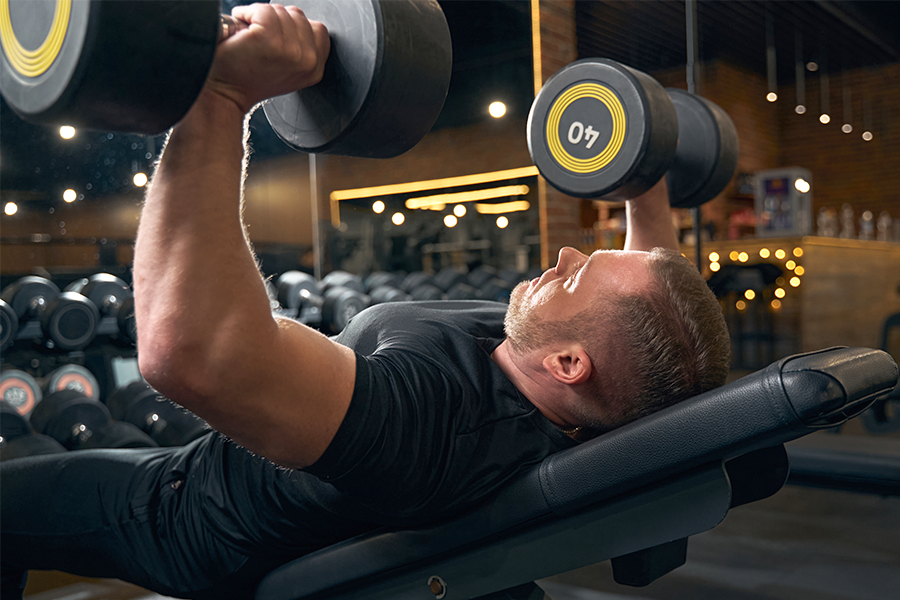
The Seated Incline Dumbbell side lateral raise is also called a deltoid raise.
It uses a bench and weights to perform this workout
Why Seated Incline Dumbbell Side Lateral Raise?
Seated Incline Dumbbell Side Lateral Raise is a versatile workout, and everyone who is trying to improve their shoulder muscles can perform it at home by simply using a dumbbell set.
By doing this, you will be able to achieve defined muscles and good posture without hitting the gym.
How to do it:
- Sit down on the bench with your back against the backrest.
- Hold the dumbbells hanging down to the sides, keeping elbows slightly bent.
- Raise the dumbbells to your shoulder height, keeping your arm straight.
- Hold the raised position and then lower the dumbbells to the starting position.
- Perform the desired repetitions.
Need more reading? Click here to learn more about this workout
Standing Landmine Lateral Raise
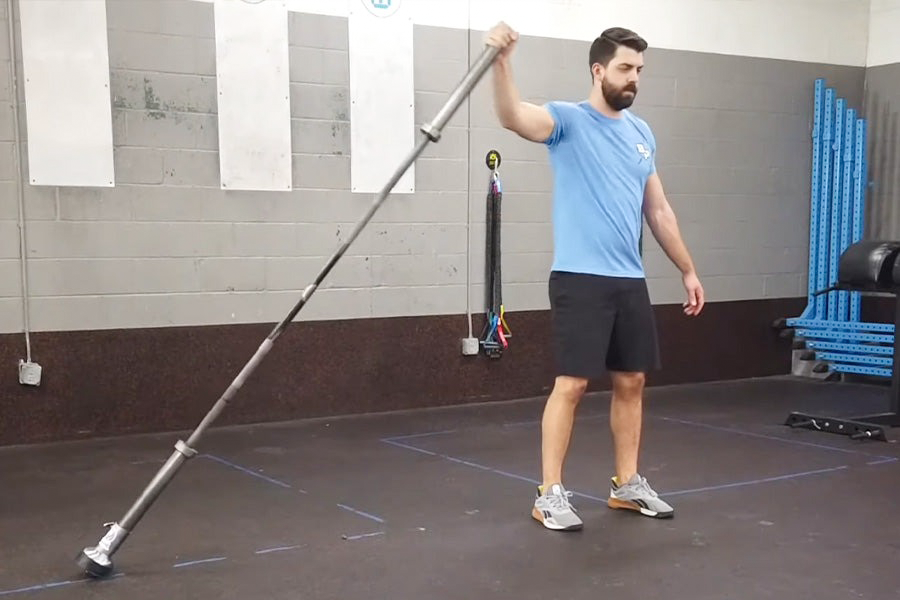
The Standing Landmine Lateral Raise is a variation of the Lateral delt raise exercise that uses a landmine attachment on a barbell to perform lateral raises.
Why Standing Landmine Lateral Raise?
The movements in the Standing Landmine Lateral Raise are the same as we do in other lifting tasks that help increase functionality.
This exercise improves the coordination between the upper and lower body, providing stability to the whole body.
How to do it:
- Stand with the barbell perpendicular to your body.
- Grab one end of the barbell with the hand facing it.
- Raise the arm above your torso,
- Slowly lower down the barbell to the starting position.
- Perform the desired number of repetitions.
Click for more information about this interesting workout
Standing Single Arm Behind Back Cable Lateral Raise
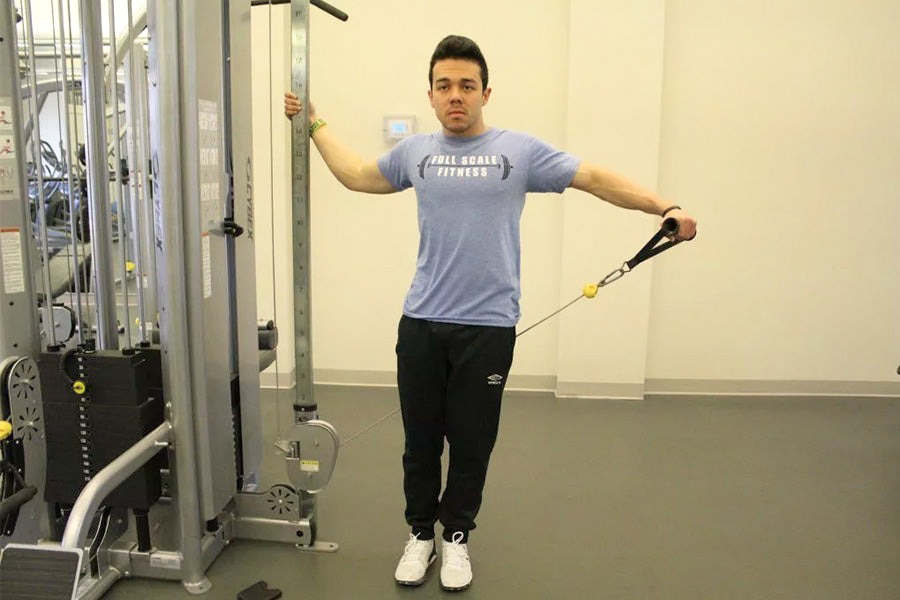
Standing Single Arm Behind Back Cable Lateral raise is the variation of lateral raise exercise that uses a cable machine to perform lateral raises.
It’s not like the free weights, where tensions can vary due to gravity.
Why Standing Single Arm Behind Back Cable Lateral Raise
Standing Single arm behind back cable lateral raise stabilizes the shoulders and enhances the lateral deltoid muscles, preventing the body from shoulder injuries.
This exercise helps to hit the muscles from different angles by changing the body positions relative to a cable machine.
How to do it:
- Attach the weight with the low pulley of the cable machine.
- Stand with your left side with the cable machine with feet shoulder-width apart.
- Make sure the cable and handle are behind you. Lift the one end of the handle of the cable machine with your right hand towards your shoulder.
- Return to the starting position after holding for some time.
- Repeat a desired number of times before switching sides
Click here for more information on Standing Single Arm Behind Back Lateral Raise
Seated Dumbbell Rear Delt Lateral Raise
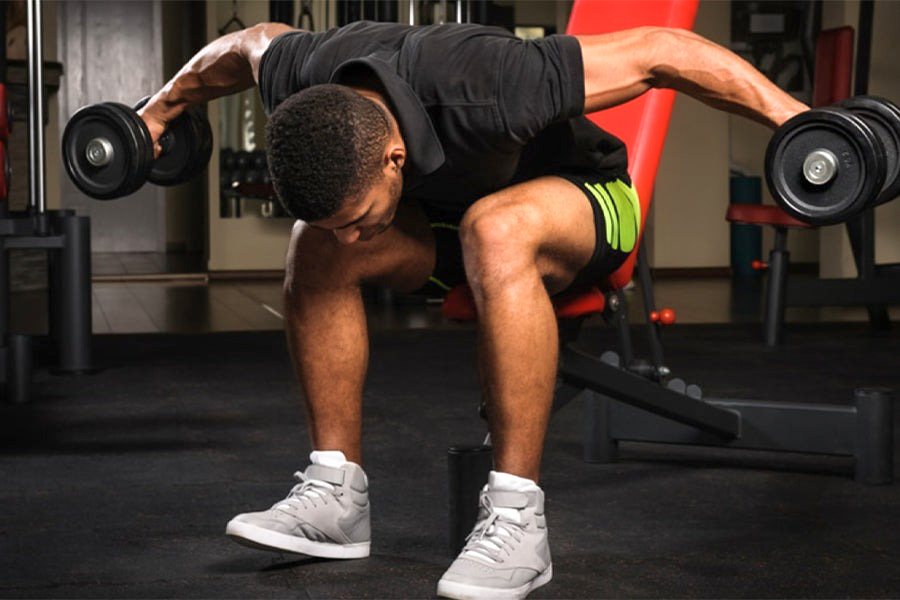
The seated dumbbell rear delt lateral raise uses the bench to target the posterior deltoid muscles.
It is a strength training workout to provide enough strength to your shoulders.
Why Seated Dumbbell Rear Delt Lateral Raise
These dumbbell lateral raises strengthen the posterior deltoids, improving the body's posture.
In this arm raises exercise, performing upper body movements like lifting and pulling helps in everyday tasks.
How to do it:
- Sit on the bench, slightly leaning forward
- Grab dumbbells in both hands with palms facing each other.
- Lift the dumbbells to your sides simultaneously, keeping your arms straight.
- Slowly return to the starting position.
- Repeat for amazing results.
Get more insights on Seated Dumbbell Rear Delt Lateral Raise
Seated Machine Side Lateral Raises
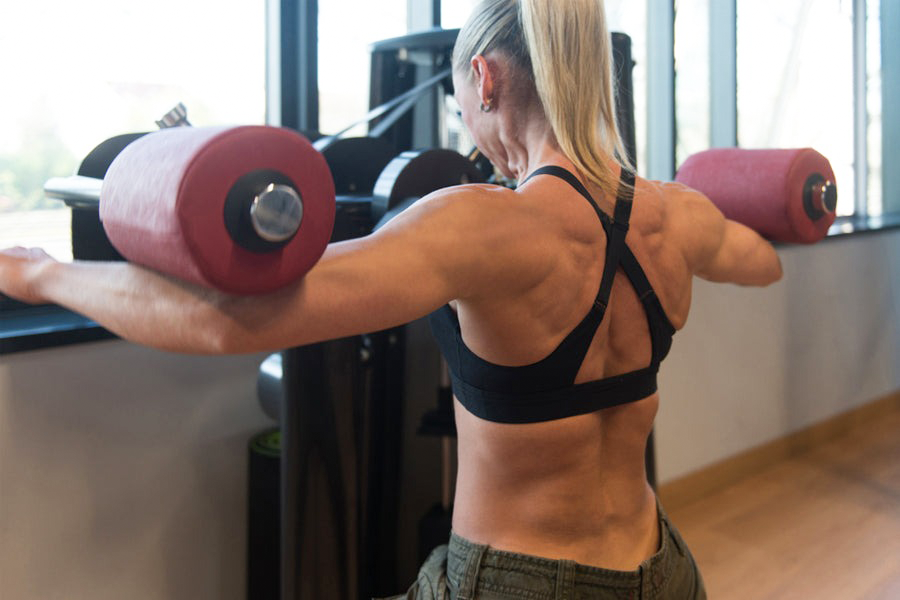
Seated Machine Side Lateral Raises are performed using the machine with the desired weight to intensify the workout for the best results.
This exercise is performed with various modifications according to the fitness level.
Why Seated Machine Side Lateral Raises?
Seated Machine Side Lateral Raises help to increase shoulder stability and mobility.
It’s a great option other than weight exercises to work on your shoulders to prevent injuries.
These lateral deltoid raises help to prevent training plateaus as well.
How to do it:
- Sit on the lateral raise machine after choosing your desired weight.
- Extend your arms and grab the handles, resting your arms on the cushion area.
- Keep your core engaged and back straight.
- Push the weight till your arms are parallel to the ground.
- Slowly return to the starting position.
Read this article to get complete information regarding Seated Machine Side Lateral Raises: Seated Machine Side Lateral Raises
Bent Over Rear Delt Lateral Raise

Bent over Rear delt Lateral raise, also known as bent-over lateral raise, is a low-intensity workout.
It can be performed with dumbbells, resistance bands, or cables.
Why Bent Over Rear Delt Lateral Raise?
The Bent over Rear Delt Lateral raise improves your posture by targeting the rear deltoid muscles.
Strong rear deltoids contribute to overall shoulder stability and can help prevent injuries.
You can get well-rounded shoulders by this workout.
How to do it:
- Stand with your feet shoulder-width apart.
- Slightly hinge forward at your hips with your palms at your sides
- Grab the dumbbells in both hands with palms facing each other
- Maintain the lat raises form and lift the dumbbells to the sides till shoulder level
- Slowly return to the previous position.
Get more information on Bent Over Rear Delt Lateral Raise: Bent Over Rear Delt Lateral Raise
Seated Dumbbell Lateral Raise
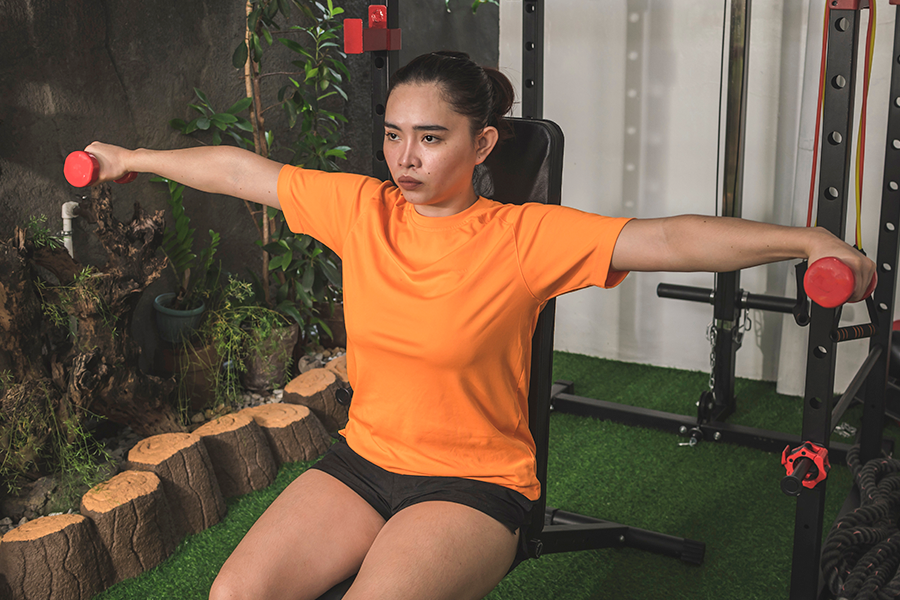
A seated dumbbell lateral raise is more like a seated rear dumbbell lateral raise.
The difference between both of them is that we don’t lean forward in a seated dumbbell lateral raise.
Why Seated Dumbbell Lateral Raise
This exercise provides wide shoulders and targets the side head of shoulders to provide stability.
It develops the width and shape of the shoulders, contributing to a more aesthetically pleasing upper body.
How to do it:
- Sit on the bench with feet slightly width apart.
- Hold the dumbbells in both hands with palms facing each other.
- Lift the dumbbells to your sides, keeping the back straight and arms slightly bent.
- Return to the starting position after reaching the shoulder height.
You can learn more about Seated Dumbbell Lateral Raises here: Seated Dumbbell Lateral Raise
Standing Banded Lateral Raise
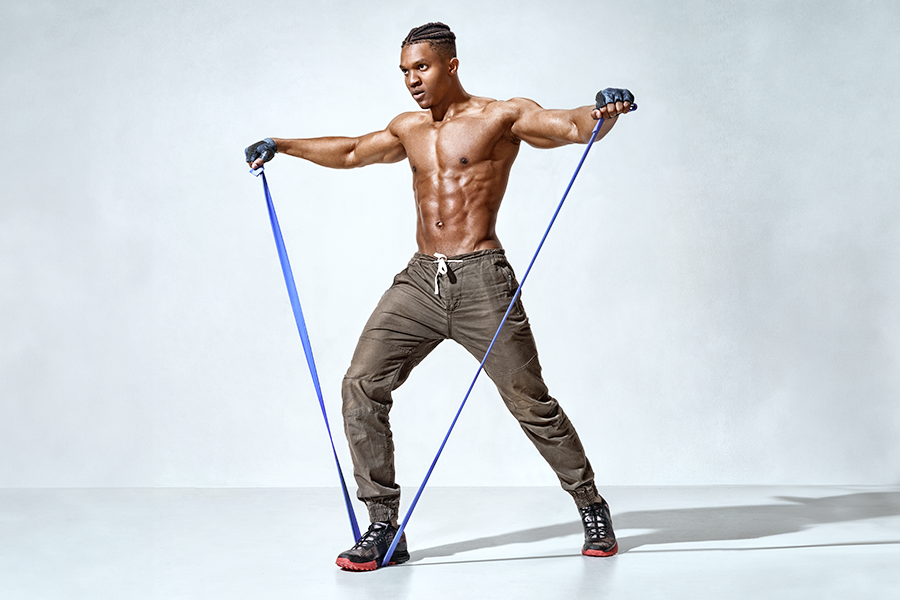
A standing banded lateral raise is a standing lateral raise that requires resistance bands to perform it.
The plus point of this lateral raise variation is that you can increase or decrease the resistance of the band by changing the holding position.
Why Standing Banded Lateral Raise?
Standing Banded lateral raise is a joint-friendly workout that can be performed anywhere, whether at home or a gym.
It increases muscle activation and growth without stressing the joints.
How to do it:
- Stand in the middle of the resistance band with both feet one by one.
- Hold both ends of the resistance band with elbows slightly bent.
- Pull the band towards your shoulder at both sides, keeping your back straight.
- Pause for a moment when your arm is parallel to the ground.
- Slowly return to the starting position.
Read this to get further insights: Standing Banded Lateral Raise
Lateral Raise Tips
- When performing this exercise, you must emphasize muscle stretching and contraction.
- Ensure your rep timing is slow and controlled for the utmost focus on the movement.
- Your elbows should be above your wrists. Keep your wrists tilted to ensure that.
- Your dumbbells should not touch your body.
Related Article: Seated Dumbbell Front Raise
Conclusion
Lateral raises are great if you want to tone your shoulders and provide stability and mobility to the body.
There are many variations of lateral raises, and you can choose one according to your needs, as we discussed.
However, you should never forget that equipment is very important if you want to enhance the exercise results and avoid any injury.
If you use dumbbells during lateral raises, they can provide you with results in less time than doing without any gear.
That’s where DMoose comes into your life.
You can check DMoose and pick the best equipment for you. Join the DMoose community now and be the king/ queen of fitness.
Reading List
What are Deltoid Muscles? 6 Best Shoulder Isolation Exercises for Men to Get Bigger Deltoids
4-Week Shoulder Shocker Workout to Ignite Muscle Growth
5 Kettlebell Shoulder Workouts That Build Shoulder Strength & Stability
ARMergency: How to Get the Killer Arms You've Always Wanted
How to Get Bigger Arms in 30 Days: Follow These 5 Easy Steps







